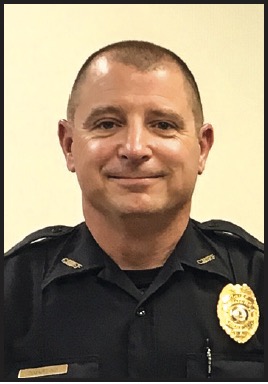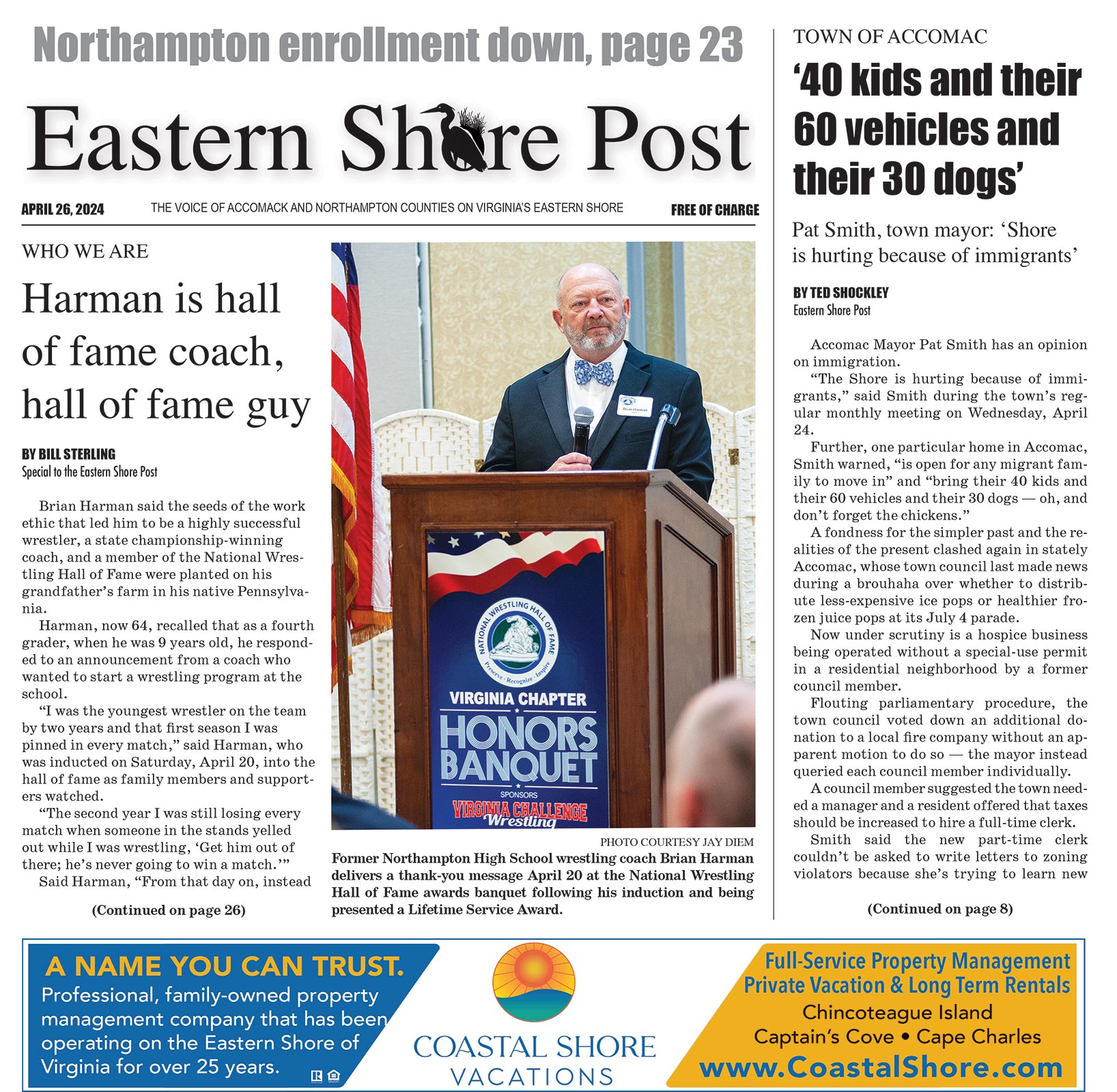By Stefanie Jackson – Protesters and police across the U.S. are clashing over the death of George Floyd, who spoke his final words while restrained by Minneapolis, Minn., police last week, but on the Eastern Shore, law enforcement officers are assuring the public of their pledge to serve and protect.
“We always render aid,” said Exmore Police Chief Angelo DiMartino.
Amateur video has shown that Floyd was already handcuffed when he was lying face down on the ground with a police officer’s knee on his neck.
“During a handcuffing technique, your front part of your shin and your knee area comes across the shoulder blade – not the neck,” DiMartino explained.
The technique allows the subject’s upper body to be controlled so the subject can be pinned to the ground and then handcuffed.
Immediately after handcuffing, the subject is rolled face up and helped into an upright position.
“If they continue to fight, then you wait for assistance,” he said.
As Floyd lay on his stomach, he repeatedly said he couldn’t breathe. DiMartino said Floyd should have been rolled onto his side.
Virginia police are prohibited from using any type of “positional asphyxiation,” including hog-tying, a type of restraint that was prevalent in the 1980s and 1990s, he said.
Back then, a police officer might carry a dog leash and use it to tie up a handcuffed subject’s legs, pull the leash through the handcuffs so the subject’s feet were raised up to his buttocks, and place the subject into the police car on his stomach.
This practice led to the deaths of several individuals who couldn’t breathe in the downward-facing position. The practice was especially harmful to heavier persons who struggled to breathe under their own weight.
“We have been taught you don’t ever put somebody in a car like that,” DiMartino said.
If a subject is resistant, “we get a cage car … and put some leg irons on them and handcuff them behind their back and put them in the car, but we always make sure they’re sitting up.”
In the rare circumstance that Exmore police must use force – for example, when a subject is tased, the officers always call an ambulance to “make sure they’re OK.”
DiMartino also praised the Crisis Intervention Team (CIT) training provided by the Eastern Shore Community Services Board, a nonprofit that provides mental health services.
CIT members are trained to recognize behaviors that indicate a person needs emergency mental health treatment, which are often misinterpreted as criminal, violent, or dangerous.
The training is offered twice each year; four of six Exmore police officers, including DiMartino, have completed the training. The other two Exmore police officers will receive their training in the fall.
Use of force is not always necessary; often, talking to a subject will de-escalate a situation, he said.
“That’s what they teach you: ‘Hey … my name’s Angelo DiMartino, I’m from the Exmore Police Department. How can I help you today? … Let’s fix this.’”
A lot has changed since DiMartino attended the police academy in 2005, when he was taught “to show up and flex your muscle.”
Now techniques are recommended to “use your mouth instead of … coming right on with hands on.”
Exmore’s police cars are equipped with video cameras, and all the officers wear body cameras that are always turned on when the police are interacting with the public. They watch and critique each other’s body camera video footage. “We’re always quality-controlling each other,” DiMartino said.
There are also “a couple channels that we watch that put on police videos,” and if there’s a bad one, “we all try to sit and watch it and see where the mistakes were made, so that we don’t make the same mistakes.”
“We have a good rapport with our citizens here,” he added. “I think Exmore does more for their town than anybody.” He listed numerous events the police department organizes, including its annual Easter egg hunt, the National Night Out party held every August in the town park, toy drives, Christmas raffles, and others.
His department practices what is known as “community policing,” in which police build trust by showing their presence in the neighborhoods they serve and participating in community events.
The Exmore Police Department’s policy is based on the Virginia Department of Criminal Justice model policy.
The policy is frequently updated as laws continually change. For example, early in DiMartino’s career, tasing was allowed if a subject was “mouthing off and not complying.” Now tasing is allowed only for a more serious offense, such as making a threat of physical harm to a police officer or another individual.
Policies are affected by legal changes at both the state and federal level. One well-known case that led to a federal-level policy change was the U.S. Supreme Court case Tennessee vs. Garner.
In 1974, Edward Garner, 15, died in Memphis, Tenn., after he fled the scene of a possible break-in and police shot him in the back. (He should not be confused with Eric Garner, 43, of Staten Island, N.Y., who died in 2014 after a police officer restrained him using a chokehold.)
The 1985 Supreme Court decision altered police department policies across the nation. Police are prohibited from shooting fleeing suspects unless they pose immediate danger to others.
“That’s what will change the policies,” DiMartino said. “I’m sure Minneapolis is probably going to have a policy change after this.”



